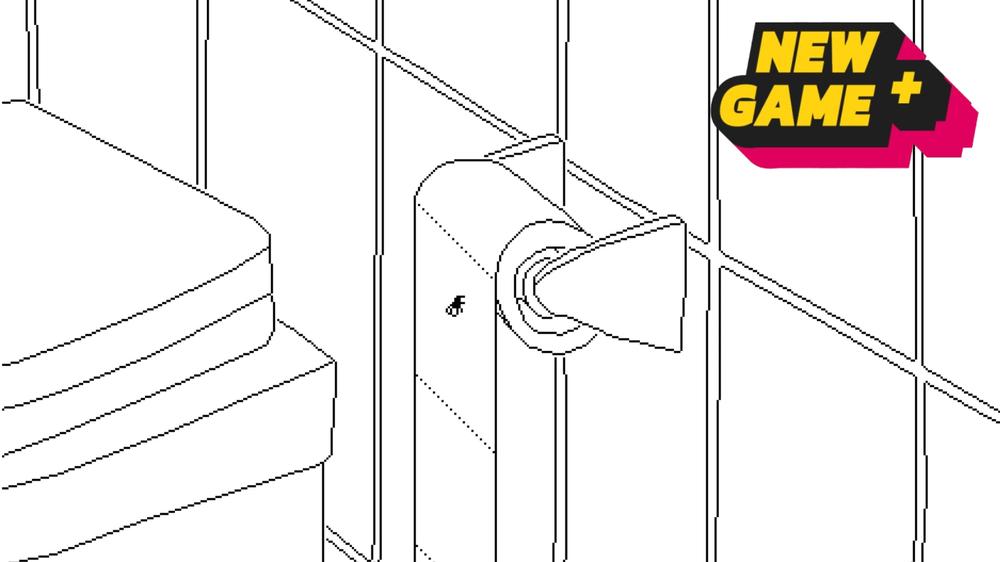Time Flies. No, really. Time is flying. You’re a fly and there’s only so much time in the world in which to fly. Go now. Fly to your wildest dreams before time runs out.
The life expectancy of a human is short enough as is, but have you ever stopped and given some thought to the plight of a common housefly? The pesky critters aren’t exactly anyone’s favorite, but they have some of the shortest lifespans in the animal kingdom.
Framing an interactive game around that very thought, Time Flies puts you in control of said housefly. Buzzing to and fro, you can explore an art gallery or navigate through a sewer. You might get zapped by a light fixture or drown in a tiny droplet of water. Maybe you’ll complete a puzzle or even find God.
There’s plenty of fun to be had, but there is a downside. You’ve barely got a minute to enjoy it all before you’re nothing more than bug meat.
What is Time Flies?
When it comes to playing Time Flies, the developers “tried to keep it quite simple,” as Michael Frei told me. You control a fly. You have a limited amount of time to explore. Go have some fun.
That’s really the gist of it. See what you can get up to as a fly in various environments. You can play the piano, fire a bow and arrow, and even see the world (on a globe). What you get up to in your brief time on Earth is yours to decide, but there is a list to help guide you if you’re feeling up for it.
Flies have ambitions too, it turns out, so each level comes with its own ‘Bucket List.’ By completing each and every task on said Bucket List, in a single life, you’ll progress to the next area.
Given the ever-clicking doomsday clock, there’s an inherent challenge in figuring out each interaction and then sequencing it all together in one chaotic run. But there’s a gleeful delight when you get it all just right.
It’s a charming little 2-3 hour experience that’ll have you laughing out loud more than a few times. Sometimes that’s exactly what we need.
What the devs say about it
Before it was even a game
“It was clear we wanted to do something with a fly as a character,” Frie said. “The first idea was more like a browser extension, where the fly would represent all the trackers on a website. The more trackers, the more flies, and the more annoying it is. We weren’t really talking about a game at the start.
“Even Time Flies was thought of as a website you would visit, not a game.”
Buying a new TV
“It happened during the pandemic… I was bored at home, like a lot of people during that time,” Frei said of when the idea for the game first came to mind.
“I bought myself a television. It was a nice, 4K television. But it had one dead pixel. I couldn’t not see the dead pixel. It’s a 4K TV, so there’s like eight million pixels, but I was annoyed by one dead pixel.
“At the same time, during that day, I read a statistic from the World Health Organization about how 40 people had died of COVID just in Switzerland that day.
“In Switzerland, we have like 80 million people. 40 died, and I don’t feel much. But I’m annoyed by one pixel on my eight-million-pixel screen. Those thoughts were in my head.”
Why flies?
“I don’t quite know,” Frei said with a laugh.
“I have a small sister. When she’s asked what her favorite animal is, she says the housefly. I’m never sure whether she’s joking or not. It’s definitely not my favorite animal. I don’t think it’s anyone’s favorite animal.
“What interested me about the fly, I couldn’t reduce the character to less than one pixel, which meant I had to focus more on the world. That was something I’d never really done before, telling stories through the world you explore, and that was an interesting challenge.”
“When we started, our first week of brainstorming, I remember Michael came with an animation of a hand trying to smash flies,” Munoz recalled. “That’s how we brought the fly idea to the table. The fly was a good fit because we were thinking about data from around the world, and you can find flies all around the world.”
How the levels were designed
“The way we worked, Michael would make an animation mockup of what an interaction would have to be,” Munoz said. “Then I’d have to implement that and think of all the edge cases. So every interaction had different edge cases.”
“Most ideas were very simple on paper but quite difficult to implement,” Frei added. “They needed to be intuitive for the player; we had to do a lot of playtesting.
“I think the target audience is ourselves first, then everyone else. It was all about figuring out what a fly could do. Interesting, unexpected things. In the first level, it stays a bit to what you’d expect. Then it kind of goes off that path. For us, it was important that it doesn’t feel like repetition or too much of a chore.”

 El Tuca Tuca unido jamás será vencido
El Tuca Tuca unido jamás será vencido